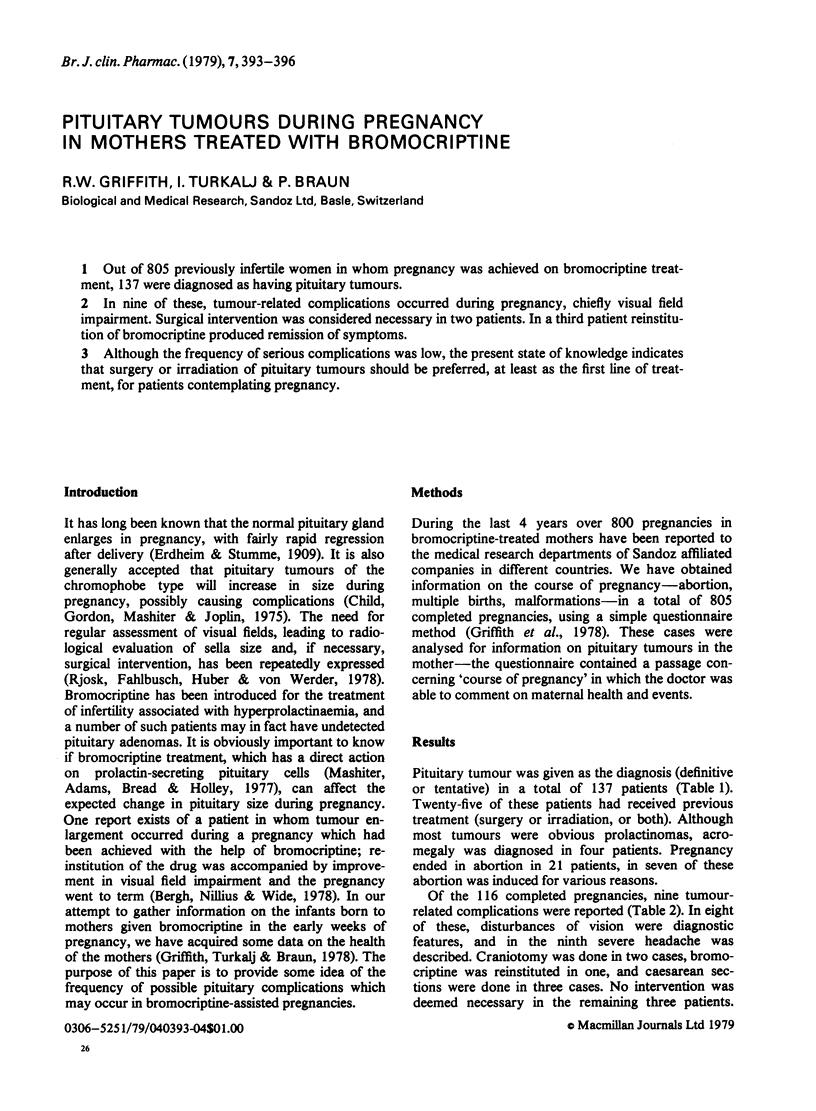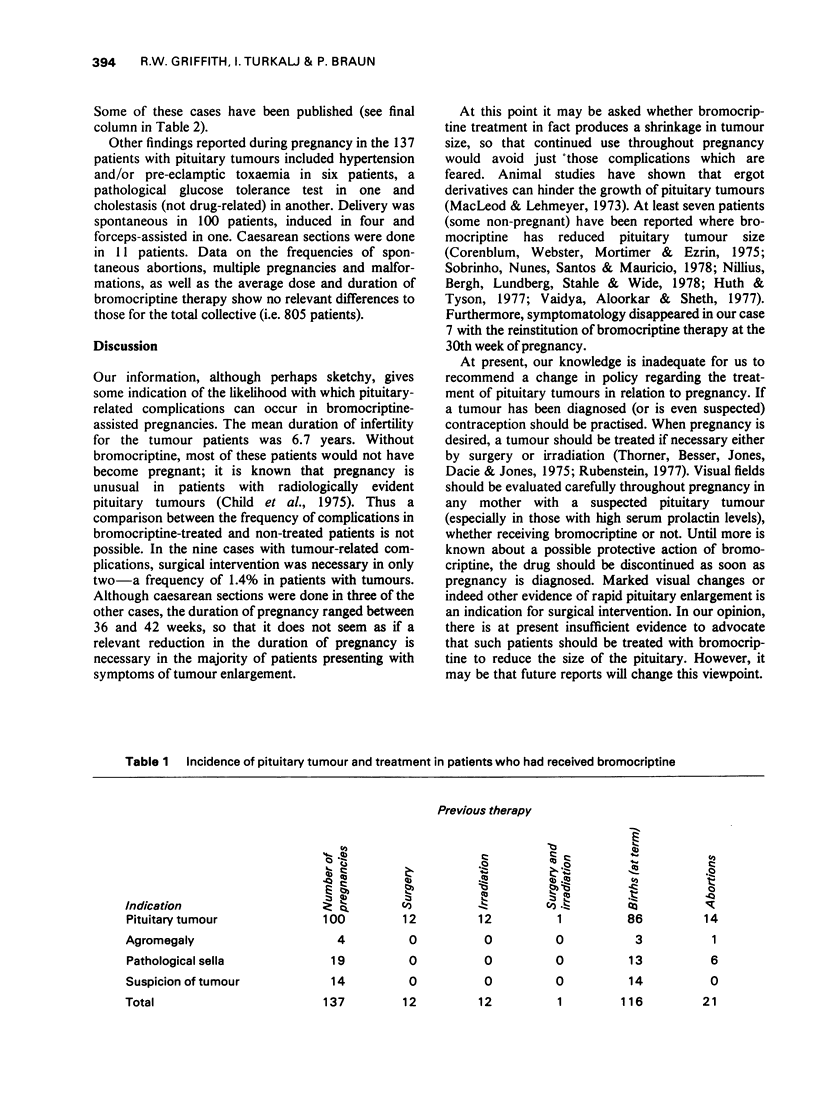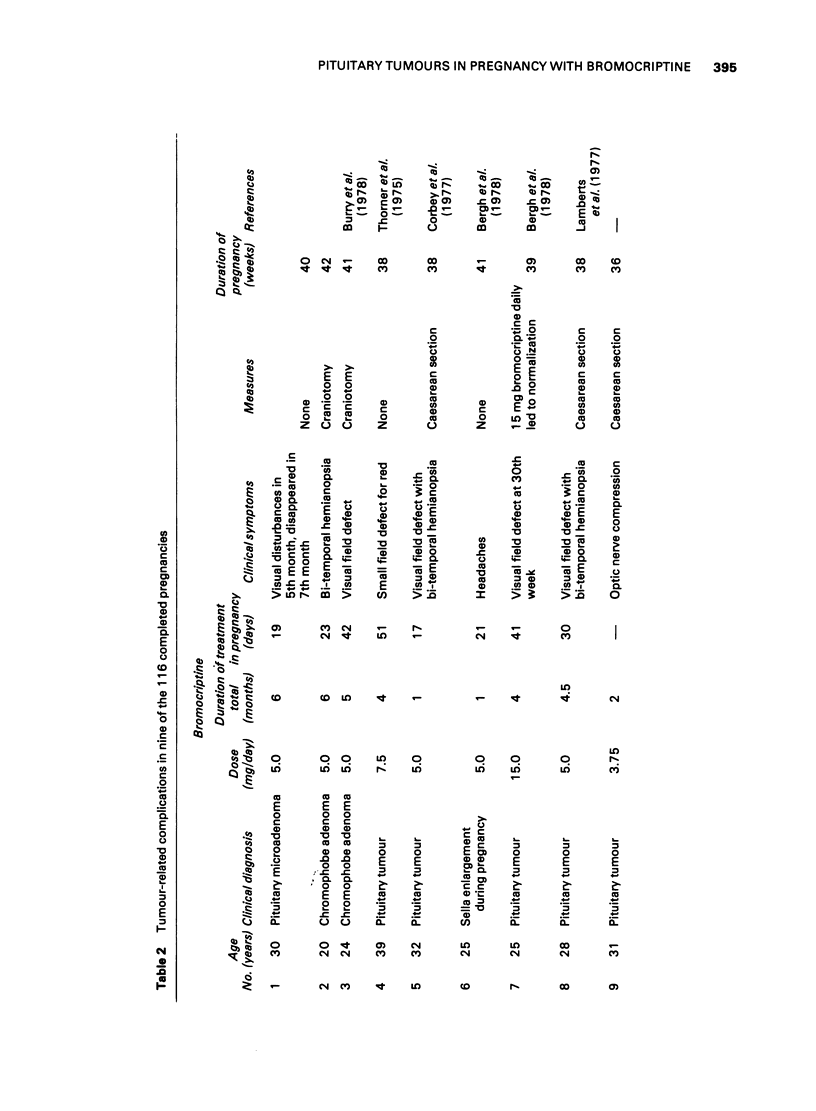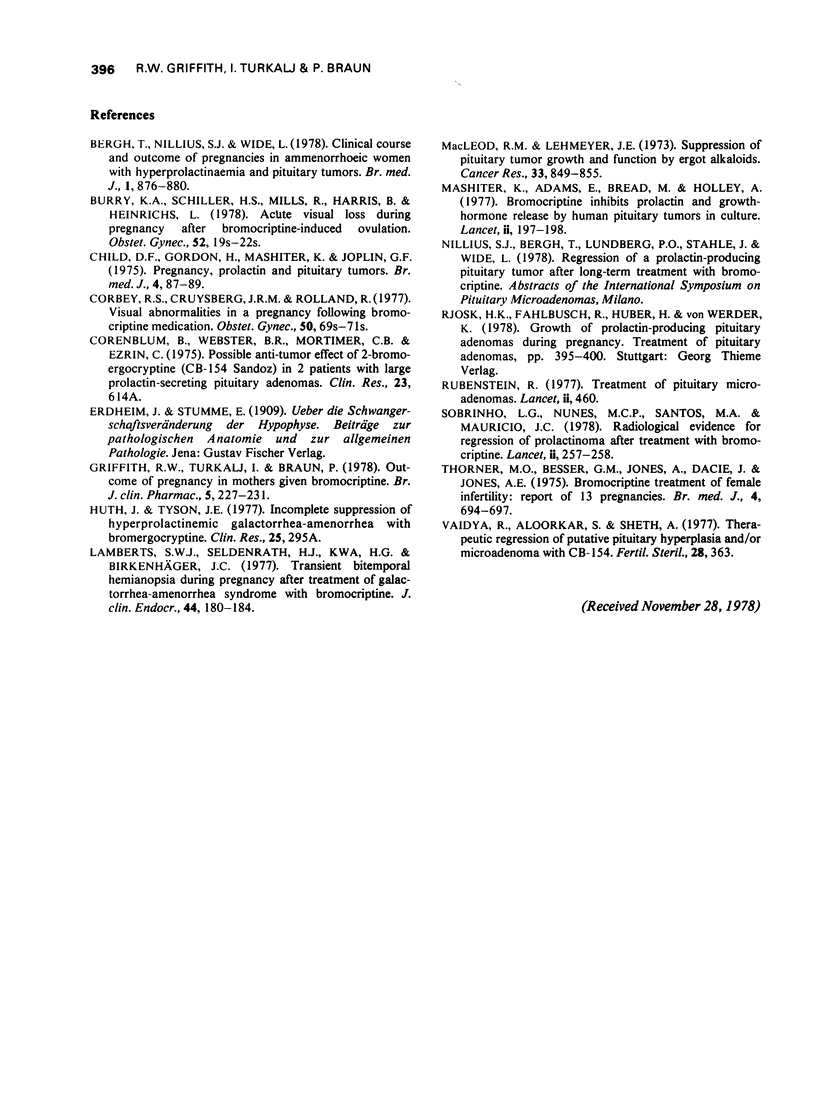Abstract
1 Out of 805 previously infertile women in whom pregnancy was achieved on bromocriptine treatment, 137 were diagnosed as having pituitary tumours. 2 In nine of these, tumour-related complications occurred during pregnancy, chiefly visual field impairment. Surgical intervention was considered necessary in two patients. In a third patient reinstitution of bromocriptine produced remission of symptoms. 3 Although the frequency of serious complications was low, the present state of knowledge indicates that surgery or irradiation of pituitary tumours should be preferred, at least as the first line of treatment, for patients contemplating pregnancy.
Full text
PDF



Selected References
These references are in PubMed. This may not be the complete list of references from this article.
- Bergh T., Nillius S. J., Wide L. Clinical course and outcome of pregnancies in amenorrhoeic women with hyperprolactinaemia and pituitary tumors. Br Med J. 1978 Apr 8;1(6117):875–880. doi: 10.1136/bmj.1.6117.875. [DOI] [PMC free article] [PubMed] [Google Scholar]
- Child D. F., Gordon H., Mashiter K., Joplin G. F. Pregnancy, prolactin, and pituitary tumours. Br Med J. 1975 Oct 11;4(5988):87–89. doi: 10.1136/bmj.4.5988.87. [DOI] [PMC free article] [PubMed] [Google Scholar]
- Griffith R. W., Turkalj I., Braun P. Outcome of pregnancy in mothers given bromocriptine. Br J Clin Pharmacol. 1978 Mar;5(3):227–231. doi: 10.1111/j.1365-2125.1978.tb01629.x. [DOI] [PMC free article] [PubMed] [Google Scholar]
- Lamberts S. W., Seldenrath H. J., Kwa H. G., Birkenhäger J. C. Transient bitemporal hemianopsia during pregnancy after treatment of galactorrhea-amenorrhea syndrome with bromocriptine. J Clin Endocrinol Metab. 1977 Jan;44(1):180–184. doi: 10.1210/jcem-44-1-180. [DOI] [PubMed] [Google Scholar]
- MacLeod R. M., Lehmeyer J. E. Suppression of pituitary tumor growth and function by ergot alkaloids. Cancer Res. 1973 Apr;33(4):849–855. [PubMed] [Google Scholar]
- Mashiter K., Adams E., Beard M., Holley A. Bromocriptine inhibits prolactin and growth-hormone release by human pituitary tumours in culture. Lancet. 1977 Jul 23;2(8030):197–198. doi: 10.1016/s0140-6736(77)90219-7. [DOI] [PubMed] [Google Scholar]
- Rubenstein R. Treatment of pituitary microadenomas. Lancet. 1977 Aug 27;2(8035):460–460. doi: 10.1016/s0140-6736(77)90651-1. [DOI] [PubMed] [Google Scholar]
- Sobrinho L. G., Nunes M. C., Santos M. A., Mauricio J. C. Radiological evidence for regression of prolactinoma after treatment with bromocriptine. Lancet. 1978 Jul 29;2(8083):257–258. doi: 10.1016/s0140-6736(78)91764-6. [DOI] [PubMed] [Google Scholar]
- Thorner M. O., Besser G. M., Jones A., Dacie J., Jones A. E. Bromocriptine treatment of female infertility: report of 13 pregnancies. Br Med J. 1975 Dec 20;4(5998):694–697. doi: 10.1136/bmj.4.5998.694. [DOI] [PMC free article] [PubMed] [Google Scholar]


